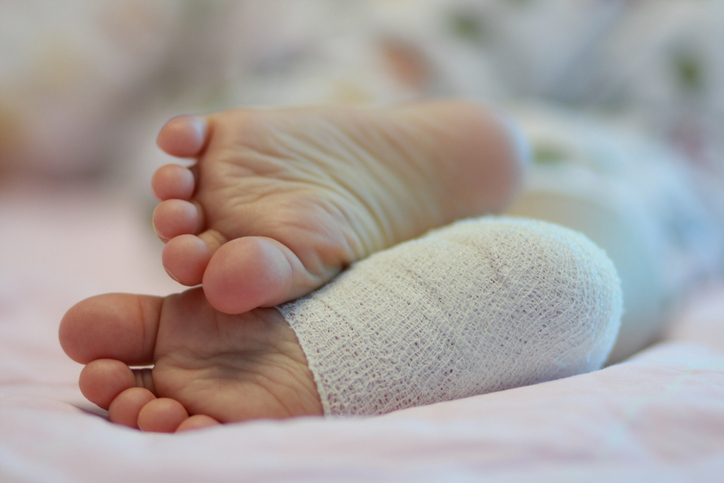
iStock
By Mary Carpenter
“WHEN a wound doesn’t heal, something else is going on,” Jule Crider, past executive director of an association of wound care specialists, told MyLittleBird.
So that patients don’t have to “schlep around” from one specialist to another, Crider explained, wound centers bring together teams of physicians who can select and provide the best treatments—such as hyperbaric oxygen (HBO), negative pressure therapy, surgery, medication —because each individual’s non-healing, or chronic, wound is different. The teams can include foot and ankle surgeons, orthopedic surgeons, plastic surgeons and vascular specialists, along with specialists in limb salvage and wound care.
A wound typically becomes “chronic” after 30 days without measurable improvement or 90 days without complete healing—or when healing begins and then stalls, commonly between two to four weeks after the initial injury, said Crider. The “gray areas” that occur at these points can be difficult for most physicians to recognize or treat.
The “art and science of wound care” involves a combination of detective work—asking all the important questions—along with hands-on attention, and both can be time-consuming for a busy general practitioner, explained Crider. Chronic wound care can also require specialized tools and supplies not commonly found in doctors’ offices.
But because wound centers may not always be well known in their communities, many physicians initiate treatment without having the resources to provide the best option— for example, podiatrists who are trained to treat only below the ankle.
Chronic wounds most commonly start as ulcers but can begin with something benign like a blister. A surprisingly frequent, problem-causing wound occurs from tripping over the dishwasher door—linked to diminished balance, vision and ambulation that can occur with aging, said Crider.
That underlying “something else” mentioned by Crider is most often diabetes, peripheral artery disease (PAD) or obesity—especially in combination and especially in those with tissue-thin skin that tears easily and heals slowly. In adults ages 65 and older, diabetes and/or PAD occur in close to 20%—as well often as inadequate nutrition, poor hydration and decreased immunity.
On the other hand, even among people who are younger, healthy, active, non-smokers, with no vascular disease, and not obese, two to three percent end up with wounds that fail to heal in 30 days, Jule Crider said.
A wound begins to heal seconds after injury—starting with hemostasis that stops blood flow with the creation of a clot, which both plugs the wound and creates a provisional matrix. The next three phases, which can overlap, are inflammation, proliferation and tissue remodeling— with the final phase taking as long as a year.
The first steps in early wound treatment are cleaning with soap and running water, applying antibiotic ointment and covering with a bandage, plus using pressure to stop any bleeding. For a wound that is large, deep, won’t stop bleeding or is on the face or over a joint, stitches can speed healing but must be done in the first eight hours after the injury—before bacteria has a chance to enter and before the body’s own healing response begins.
Common signs that a wound is becoming infected include nearby skin becoming redder or more painful, or the wound becoming warm, swollen or oozing. More serious indicators are chills, fever over 100 degrees and red streaks near the wound.
Moisture-retentive dressings help keep wounds hydrated and enhance the migration of healthy cells to the site—a reversal from the older belief in keeping wounds dry. “Desiccation,” when a scab or crust forms over the wound site, can impede healing, as can infection and swelling.
Another important “standard care” tool is debridement—controlled removal of dead or unhealthy skin to provide a clean surface for healing. For chronic wounds, debridement can keep the wound in “active” stage —as if reminding the body to do more healing—or jumpstart the process. Other tools in “standard care” are pressure stockings to improve circulation and skin grafts.
Hyperbaric oxygen can help heal “from the inside out,” according to the University of Rochester’s Strong Wound Healing Center website —especially useful for younger patients based on health status and other factors, and for locations without a wound care center. The pressurized chambers, usually located in hospitals, can increase the concentration of oxygen in the blood, which can help reduce swelling, fight infection and build new blood vessels to improve circulation.
But HBO can be cumbersome because it requires series of treatments, often five times a week for four to six weeks. In the case of post-surgery wounds, some experts believe the best results occur when HBO is used right away, though national guidelines mandate waiting 30 days. But others caution against the overuse of HBO and recommend it only as a last resort to avoid amputation, and only in combination with other methods to achieve complete healing.
Medications to thin the blood or to relax the blood vessels can also help, especially for older patients, when the body’s “plumbing is clogged up enough,” says Crider. And negative-pressure wound therapy, using a vacuum pump to create suction, can remove excess fluid from the wound.
But not all wounds will heal, warns Crider—especially in those patients with more serious underlying conditions. These wounds get to maximum healing and, after that, require palliative care.
Mary Carpenter regularly reports on topical issues in health and medicine.
